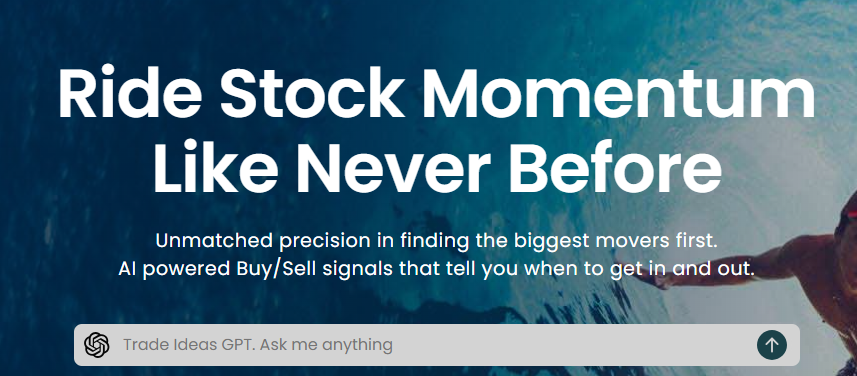20 New Tips On Choosing AI Stock Investing Analysis Websites
20 New Tips On Choosing AI Stock Investing Analysis Websites
Blog Article
Top 10 Tips For Customizing Ai Trading Platforms To Your Strategy
AI platform for stock-predicting and analyzing stocks offer various options for customization, which allow users to customize their platform to suit their own trading goals in terms of risk-taking, as well as market condition. A platform offering a range of customizations can enhance your trading. Here are 10 guidelines to evaluate the customizability of the platforms.
1. Evaluate Pre-Built Strategy Templates
Variety of templates: Check whether the platform provides a range of pre-built strategies for different trading styles (e.g., day trading, swing trading, long-term investing).
Usefulness: Determine how easily these templates can be modified to meet your specific needs.
Performance history: Determine whether the platform offers historical performance data for previously-built strategies.
2. Create Custom Strategy
Drag-and-drop platforms: Select platforms with drag-and-drop interfaces that allow you to easily create customized strategies.
Coding Options: If are an advanced user, be sure that the platform is able to support custom coding.
Flexibility: Ensure that the platform lets you define your entry and exit parameters and risk management metrics and other essential elements of your plan.
3. Check for Backtesting Capabilities
Historical data: Make sure that the platform is able to provide enough historical data for backtesting your strategies.
Flexible parameters - Make sure you have the ability to change parameters (e.g. timeframes, indicators) while testing backtests.
Performance metrics - Check to see if the platform offers detailed performance indicators (e.g. the winning rate, Sharpe coefficient or drawdown) for all backtested strategies.
4. Evaluate Real-Time Strategy Testing
Paper trading: Make sure that the platform lets you practice or test your strategies without risking any money.
Live testing: Check whether you can test strategies in live markets with small amounts of capital to assess their performance.
Real-time adjustments: Verify if you can tweak strategies in real-time, based on market conditions.
5. Integrate Integration and Technical Indicators
Indicator library - See whether a platform offers an extensive collection of technical indicators, like moving averages (e.g. RSI), MACD, or RSI.
Custom indicators: Make sure you can import or create custom indicators for your strategies.
Combination of indicators: Examine to see if the system allows the combination of multiple indicators to create more complex strategies.
6. Check for Risk Management Tools
Stop-loss/take-profit: Ensure the platform allows you to set stop-loss and take-profit levels within your strategies.
Size of the position. Consider whether you could set up rules to size positions (e.g. percentage, set amount) and manage the risk.
Risk-reward rate: Verify whether the platform allows for setting risk-reward rates specific to strategies or individual trades.
7. Evaluate Multi-Asset Strategy Support
Asset classes: Verify that the platform offers strategies that can be used for multiple asset classes.
Cross-asset Strategies: Find out whether it is possible to devise strategies that blend different asset classes.
Market coverage: Ensure that the platform you're interested in is covered by the markets that are of interest to you (e.g. US or international cryptocurrencies, copyright).
8. Review Automation & Execution
Automated trading: Ensure the platform is able to automate the execution of strategies based upon predefined rules.
Types of orders - Make sure that the platform can support a variety of order types that can be used to execute strategies (e.g. stop, limit or market).
Latency: Ensure that the platform is running at minimum latency for trading, especially if you use high-frequency strategies.
9. Make sure you are using tools to optimize your strategy.
Parameter optimization - Ensure that the platform includes tools to optimize the strategy parameters.
Machine learning integration: Check if the platform integrates machine learning in order to refine and enhance strategies.
Scenario analysis: Verify that the platform can test strategies under various market conditions (e.g. volatile bull, volatile, bull or bear).
Review User Feedback and Community Support
User feedback: Conduct user research to determine the efficacy of the platform for customizing strategy.
Community forums - Search to see if a platform has a community that is active and in which users can share their custom strategies.
Support resources: Ensure that the platform offers tutorials, webinars, or documents that will help users develop and optimize their strategies.
Bonus Tips
Trial period: Use the trial for free to test the strategy's customization capabilities.
Scalability: Make sure the platform you choose to use can handle complex strategies that evolve when you trade.
Customer Support: Verify that the platform provides assistance for any concerns related to strategy or issues.
If you follow these guidelines, you can assess the capability of an AI platforms for analyzing and predicting stocks to customize strategy. This will allow you to choose a platform that aligns with your objectives in trading and lets you develop and refine strategies. A platform that offers an array of customizable options will let you better adjust to market trends and enhance the performance of trading. Follow the top rated his explanation for stock ai for website advice including best ai stock trading bot free, ai investment platform, ai stock trading bot free, ai stock market, ai stock picker, ai trading tools, best ai stock trading bot free, chart ai trading assistant, ai stock picker, options ai and more.
Top 10 Tips On Assessing The Social And Community Features Of Ai Platform For Predicting And Analyzing Stocks
Knowing how users share information, interact and grow is vital for comprehending the AI-driven trading and stock prediction platforms. These features are an excellent way to enhance user experience, as well as provide an excellent service. Here are 10 top tips for evaluating social and community features on these platforms.
1. Active User Community
Tip: Look for a platform that has a large user base who regularly engages in discussion and provides insights and feedback.
The reason: A vibrant user community is a vibrant community in which members can learn from each other and grow together.
2. Discussion Boards and Forums
Tip: Evaluate the quality and activity level of discussion forums and message boards.
Forums are a great way for users to post questions, debate strategies and market trends.
3. Social Media Integration
Tips: Check if the platform is integrated with social media channels (e.g., Twitter, LinkedIn) to share insights and information.
Why: The integration of social media with other platforms can boost engagement and provide information on market trends in real-time.
4. User-Generated Content
Search for tools that allow you create and share information such as blogs, articles or trading strategies.
Why? User-generated content fosters collaboration and offers diverse perspectives.
5. Expert Contributions
TIP: Ensure that the platform has contributions from experts in their field, such as AI or market analysts.
Why? Expert insight adds credibility and depth to the discussions in the community.
6. Chat, Real-Time Messaging and Chat in Real Time
Tip: Evaluate the live chat or messaging services to facilitate instant communication between users.
The reason: Real-time communications facilitate rapid information exchange and collaboration.
7. Community Moderation Assistance
Tips: Determine the degree and kind of support that is offered by your local community (e.g. moderators or customer service representatives).
Why? Effective moderation helps to create a positive and respectful environment. Support is always available to help resolve problems quickly.
8. Events and Webinars
Tips: Check if your platform hosts live sessions, Q&As, or webinars.
Why: These meetings provide a great opportunity to learn and meet directly with professionals from the industry.
9. User Reviews and Feedback
Find platforms that allow users post reviews or provide feedback about their community features and platform.
The reason: Feedback from users can help determine strengths and areas for improvement within the ecosystem.
10. Gamification of Rewards
Tips - Make sure to check if your platform has games (e.g. badges, leaderboards) or rewards given for active participation.
Gamification is a highly effective method that can encourage users to engage more with their friends and with their platform.
Bonus Tip: Privacy and Security
Make sure you use strong privacy measures and security for the community and social tools. This will protect your information and personal interactions.
These factors will help you decide if a trading platform and AI stock prediction service provides an open and friendly community that can help you improve your knowledge of trading and enhance your experience. Follow the recommended moved here for blog tips including ai copyright signals, ai stock analysis, ai stock investing, ai for trading stocks, can ai predict stock market, best ai stock prediction, ai stock trader, ai copyright signals, best ai penny stocks, best ai penny stocks and more.